Page snapshot: Quick facts about tanglehead (Heteropogon contortus), an ecologically important and widespread subtropical to tropical grass that sometimes becomes weedy.
Topics covered on this page: What is tanglehead?; Where is tanglehead found?; In which ecosystems does tanglehead grow?; What is the ecological role of tanglehead?; How is tanglehead used? Resources.
Credits: Funded by the National Science Foundation. Any opinions, findings, and conclusions or recommendations expressed in this material are those of the author(s) and do not necessarily reflect the views of the National Science Foundation. Page by Deme Burns (2023).
Updates: Page last updated June 23, 2023.
Image above: Tanglehead (Heteropogon contortus) inflorescences. The hairy racemes (4-6 cm long) have long, brown, stiff bristles emerging from paired spikelets. South West Rocks, Australia. Photo by Harry Rose (Wikimedia Commons, Creative Commons Attribution 2.0 Generic license, image cropped and resized).
What is tanglehead?
Tanglehead (Heteropogon contorta), or spear grass, is a C4 grass that is native mostly to the subtropics and tropics worldwide, although it can grow in some temperate regions that have hot, dry summers, and warm, mild winters. The genus name Heteropogon comes from the Greek words “hetero,” meaning “different,” and “pogon,” meaning “beard,” referring to the presence of bristles on the spikelets. Tanglehead can be identified by its tall stems (from 3 to 8 ft or about 0.9 to 2.4 m), tufted growth form, and long, narrow leaves. Tanglehead spreads via its spikelets, which look like tangled masses; these can be dispersed by wind or water, or by attaching to animal fur, feathers, or human clothing. Tanglehead is useful for erosion control and also is used as a forage grass.
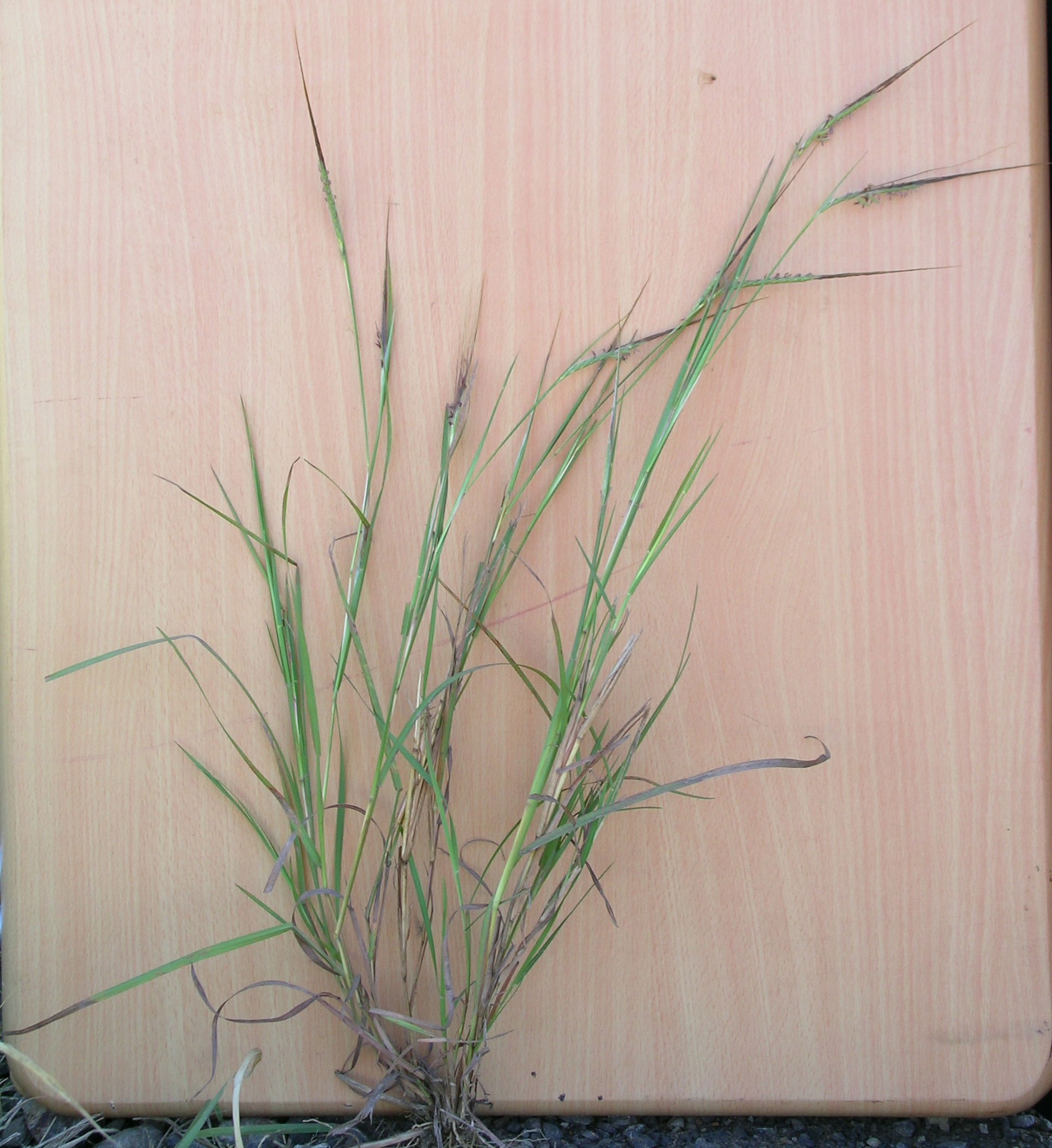
Uprooted tanglehead plant showing growth form. South West Rocks, Australia. Photo by Harry Rose. (Wikimedia Commons, Creative Commons Attribution 2.0 Generic license, image resized and cropped.)
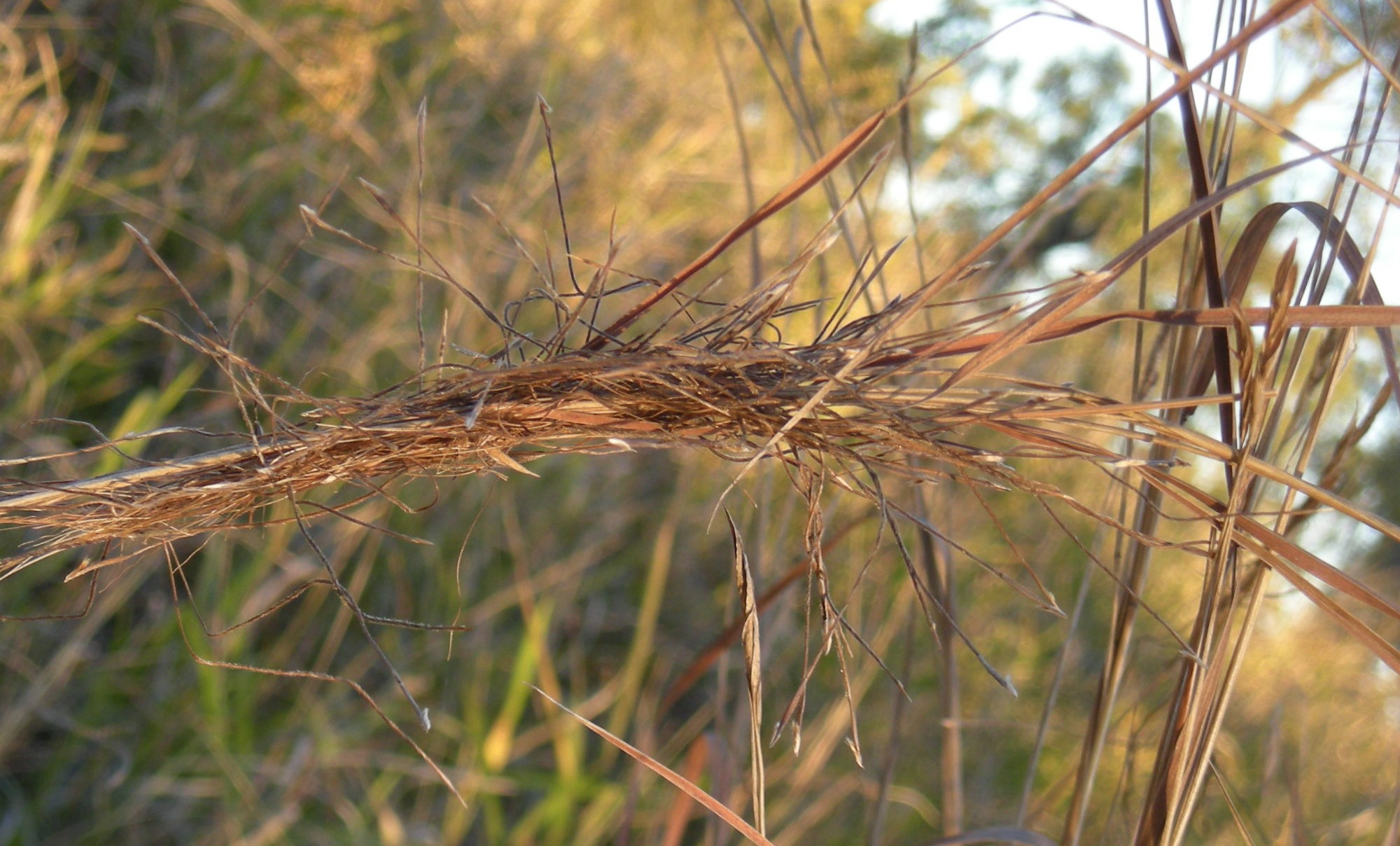
Detail of a tanglehead inflorescence showing the spikelets with awns that aid in dispersal. Photo by Ethel Aardvark. Wikimedia Commons, Creative Commons Attribution 3.0 Unported license (resized and cropped).
Where is tanglehead found?
Tanglehead can be found, either native or introduced, on six different continents, including North and South America, Europe, Africa, Australia, and Southern Asia. It is also found on Pacific Islands, such as New Guinea, the Solomon Islands, and Fiji. In Europe and Australia, tanglehead is not native but has been cultivated for agricultural and ornamental purposes. In northwestern Australia, this grass is known as “black spear grass” and is found mainly in Queensland.
Although tanglehead is found mostly in tropical and subtropical regions, it also can grow in temperate regions if conditions are favorable. These regions include parts of the Mediterranean coast in southern Europe and northern Africa, as well as in coastal South Africa. In the continental U.S., tanglehead is widely considered to be native to California, Arizona, New Mexico, and Texas. Tanglehead is very common on the Hawaiian islands, where it is often referred to as “pili.”
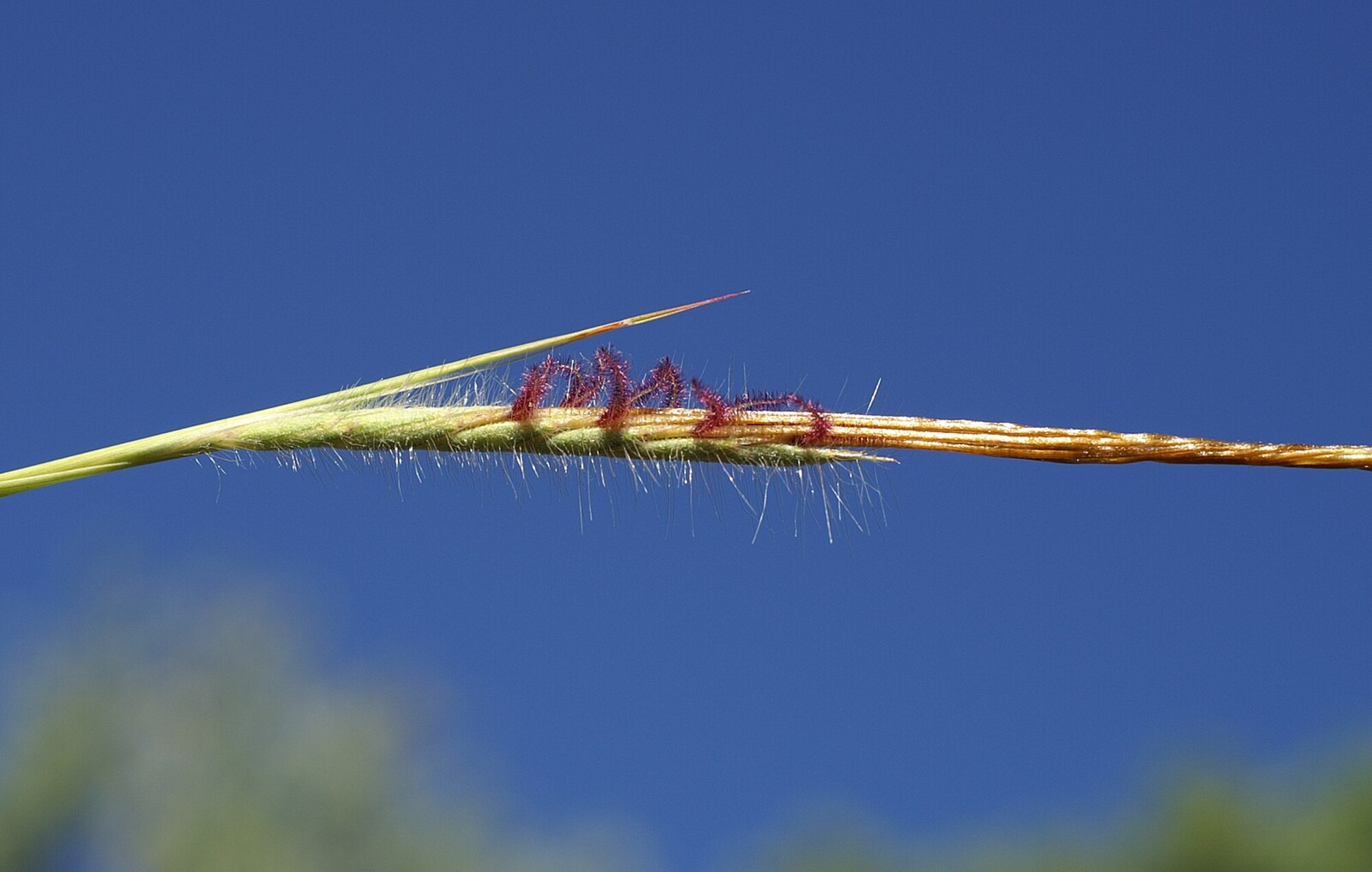
Tanglehead spikelets in an inflorescence. The feathery red structures sticking out of the inflorescence are stigmas, or pollen-receiving structures. South West Rocks, Australia. Photo by Harry Rose, (Wikimedia Commons, Creative Commons Attribution - Share Alike 2.0 Generic license. Photo cropped and resized.)

A lion resting in grass, including tanglehead, Kruger National Park, South Africa. Photo by Bernard DUPONT (Wikimedia Commons, Creative Commons Attribution - Share Alike 2.0 Generic license. Photo resized.)
In which ecosystems does tanglehead grow?
Tanglehead is best adapted to hot climates and is drought tolerant. For this reason, the grass is most commonly found in tropical or subtropical grasslands and savannas between 35°N and 35°S, which are hot and receive intense sunlight. Tanglehead thrives in poor soils and is able to grow in nutrient-poor conditions. Regular fires promote the growth of tanglehead by limiting competition and helping the grass's seeds to get established.
Tanglehead grows in a variety of ecosystems, including forest edges, coastal regions, and rangelands. In the forest, it is found where the tree canopy is open. In coastal areas, tanglehead grows in hot, harsh areas, such as dunes and beaches. Tanglehead can tolerate high levels of salt and can be found in salt marshes.
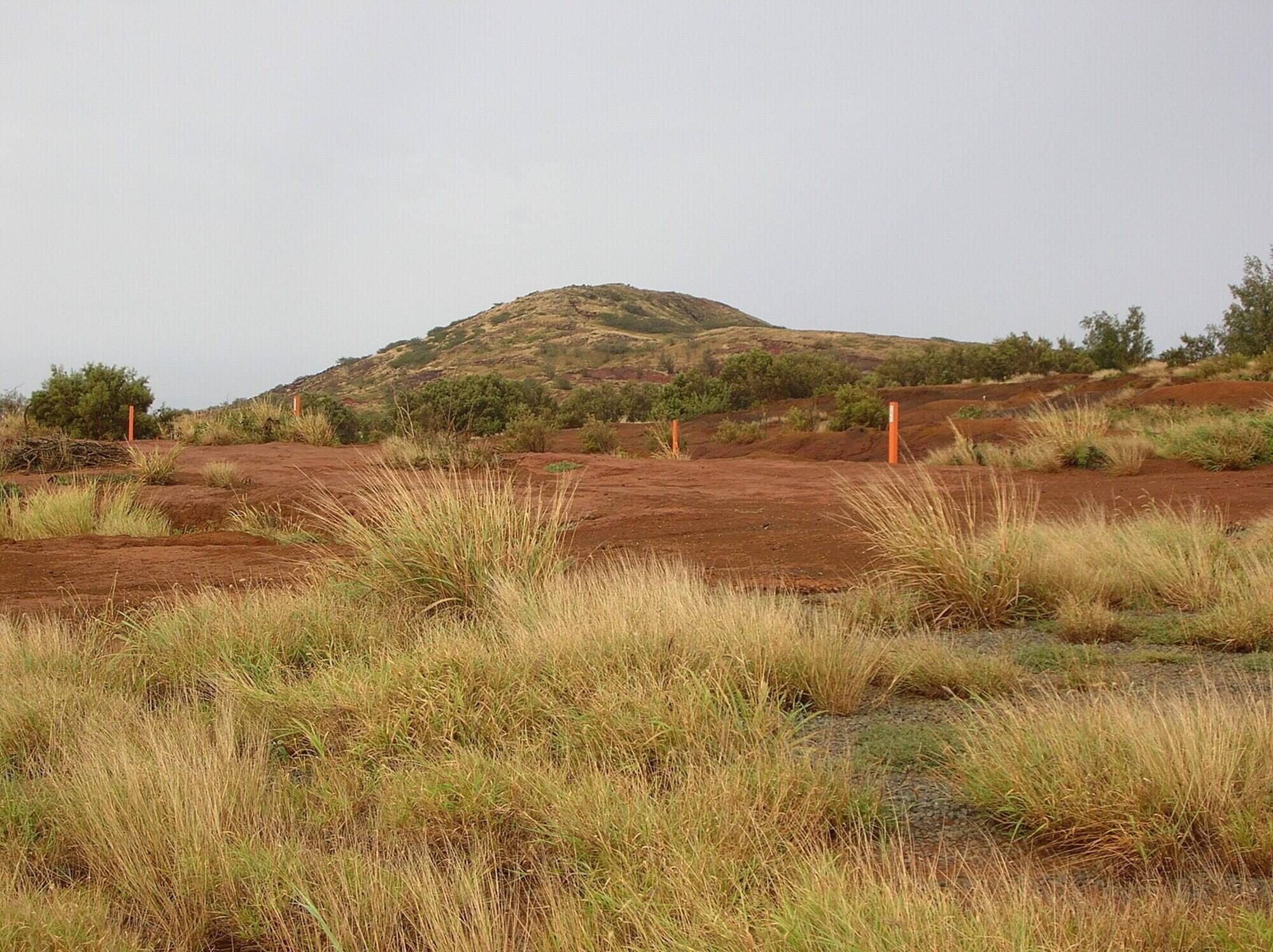
Tanglehead growing on Kahoolawe, Hawaiian Islands. Photo by Forest and Kim Starr (Wikimedia Commons, Creative Commons Attribution 3.0 Unported license. Photo resized and cropped.)
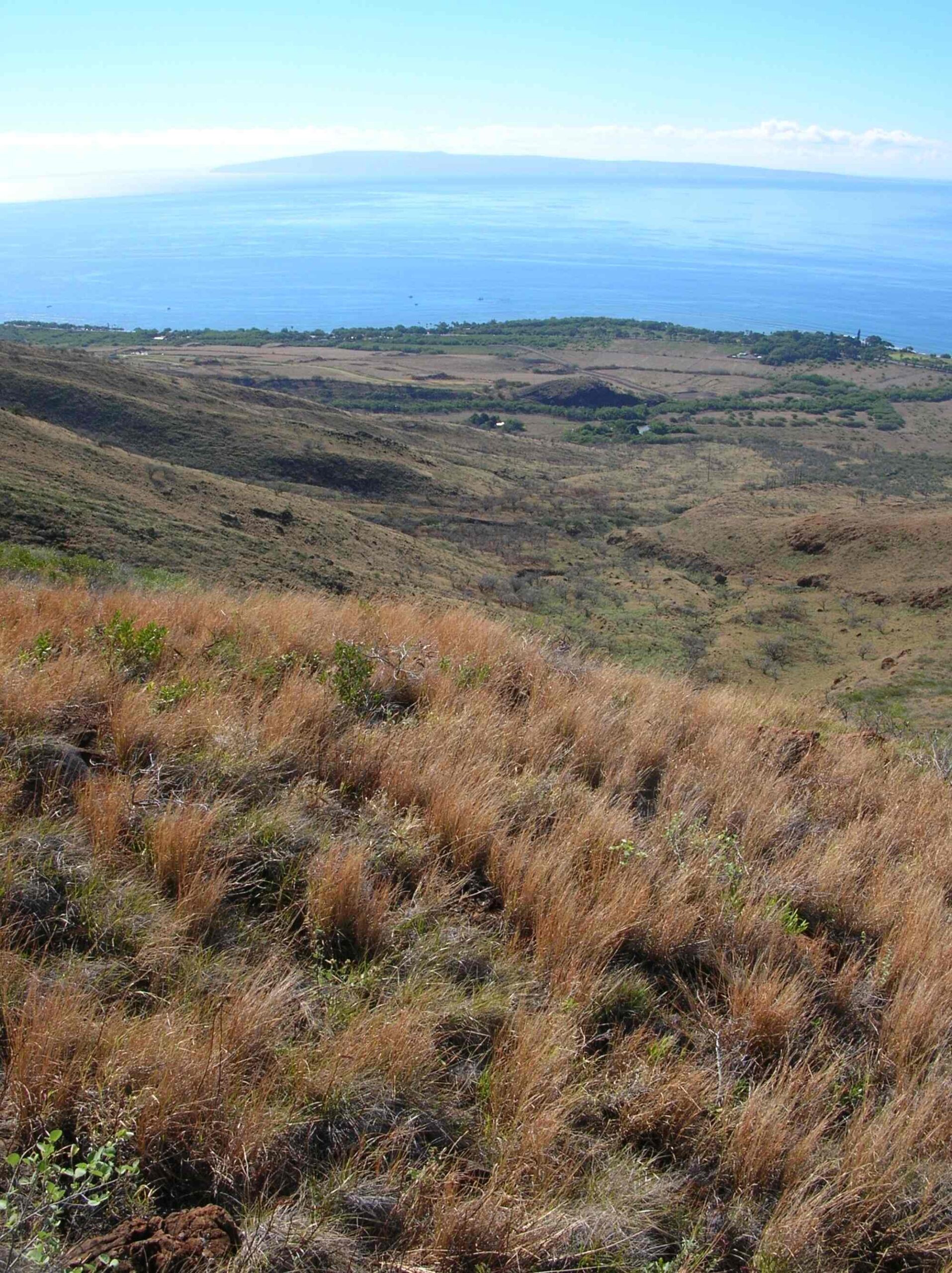
Tanglehead, Maui, Hawaiian Islands. Photo by Forest & Kim Starr. (Wikimedia Commons, Creative Commons Attribution 3.0 Unported license. Photo resized and cropped.)
What is the ecological role of tanglehead?
Tanglehead has positive impacts on ecosystems, serving as forage for grazing animals and providing habitat for wildlife. Birds use tanglehead for nesting and deer use it for fawning. Tanglehead also plays an important role in the revegetation of disturbed areas because it can grow in bare soils, thus stabilizing them.
Tanglehead can sometimes act as a weed. For example, although it is native to Texas, tanglehead has become a significant problem in the Coastal Sand Plain ecoregion by outcompeting other grasses and forming dense stands, therefore reducing the diversity of vegetation and the quality of food and shelter for wildlife and livestock. In areas where tanglehead has become invasive, the most important strategy to manage it is early detection and preventing its spread by limiting the movement of seed. Physical management by mowing or weeding and chemical management using herbicides may also be employed.
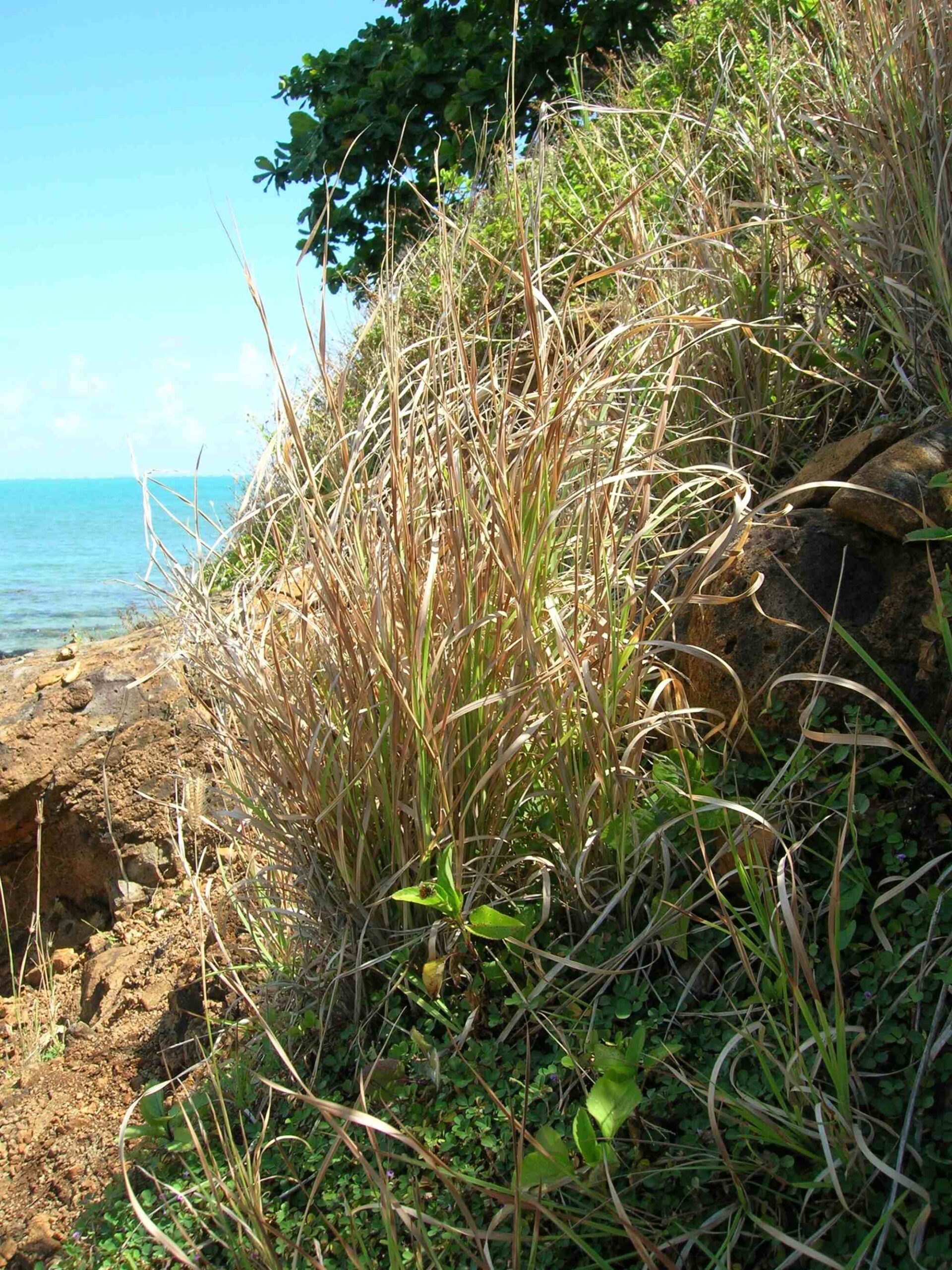
Tanglehead, Oahu, Hawaiian Islands. Photo by Forest & Kim Starr. (Wikimedia Commons, Creative Commons Attribution 3.0 Unported license. Photo resized and cropped.)
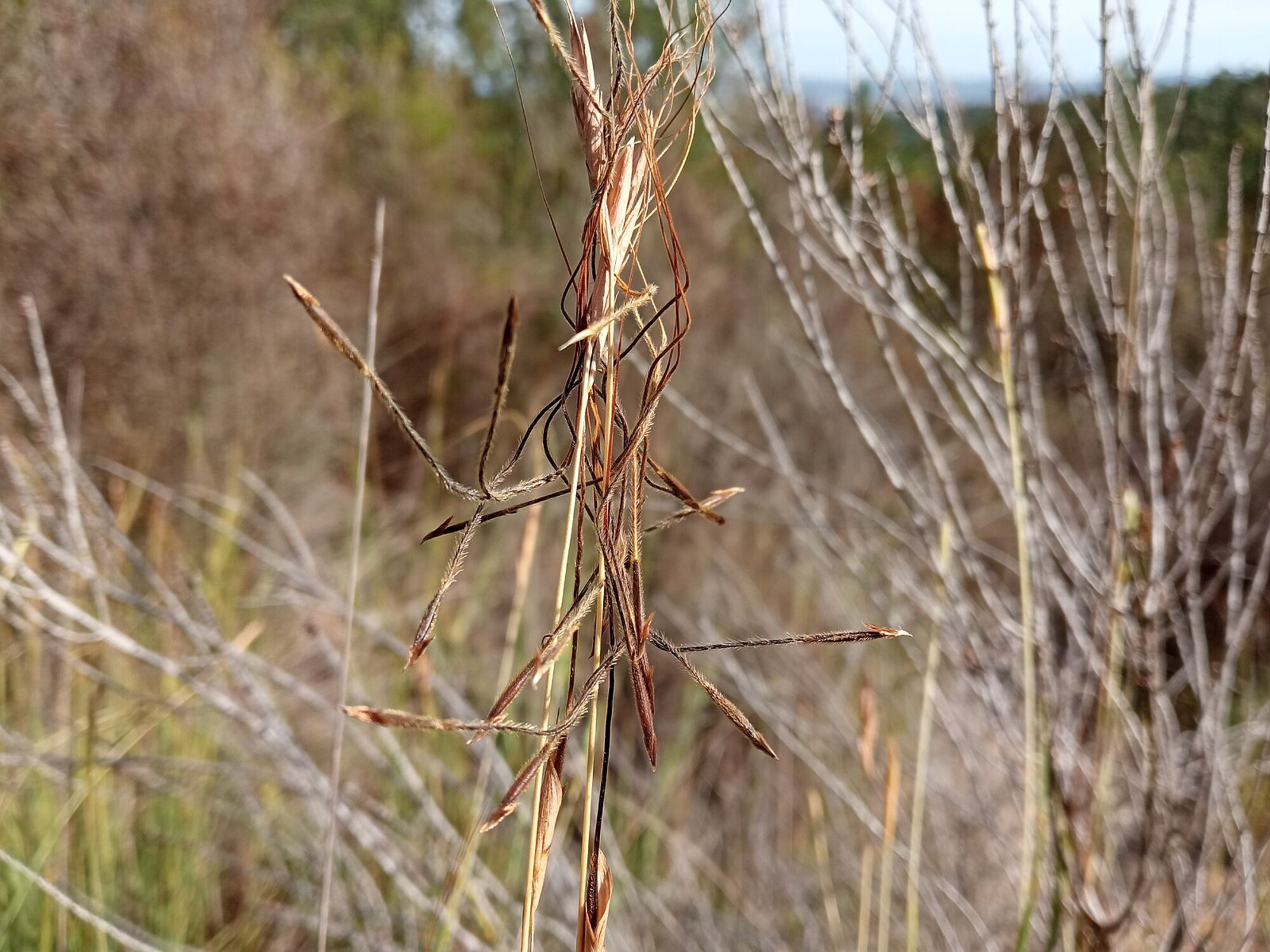
Tanglehead spikelets in an inflorescence showing the twisted awns, Santa Coloma de Farners, Catalonia, Spain. Photo by Josep Gesti (Wikimedia Commons, Creative Commons Attribution-Share Alike 4.0 International license. Photo resized and cropped.)
How is tanglehead used?
Tanglehead is used as forage for cattle and sheep, particularly in barren regions where it is hard to grow other forage. Although tanglehead can be grazed by livestock only during the growing season (it becomes too coarse to eat as it matures), it is nevertheless a good option for its ability to withstand grazing pressure and its reliability as a stable food source during droughts.
Tanglehead is also important for erosion control. It has an extensive root system that stabilizes the soil, hindering erosion along slopes and roadsides. Because it can grow in challenging environments with little water and poor quality soil, it is useful in areas that need rehabilitation, such as sites degraded or disturbed by construction or deforestation.
Tanglehead is also used as ornamental grass known for its refreshing fragrance. It is a low-maintenance option that can be planted in gardens, parks, or landscapes. In Hawaii and in parts of Africa, tanglehead is dried and used as thatching material for roofs.
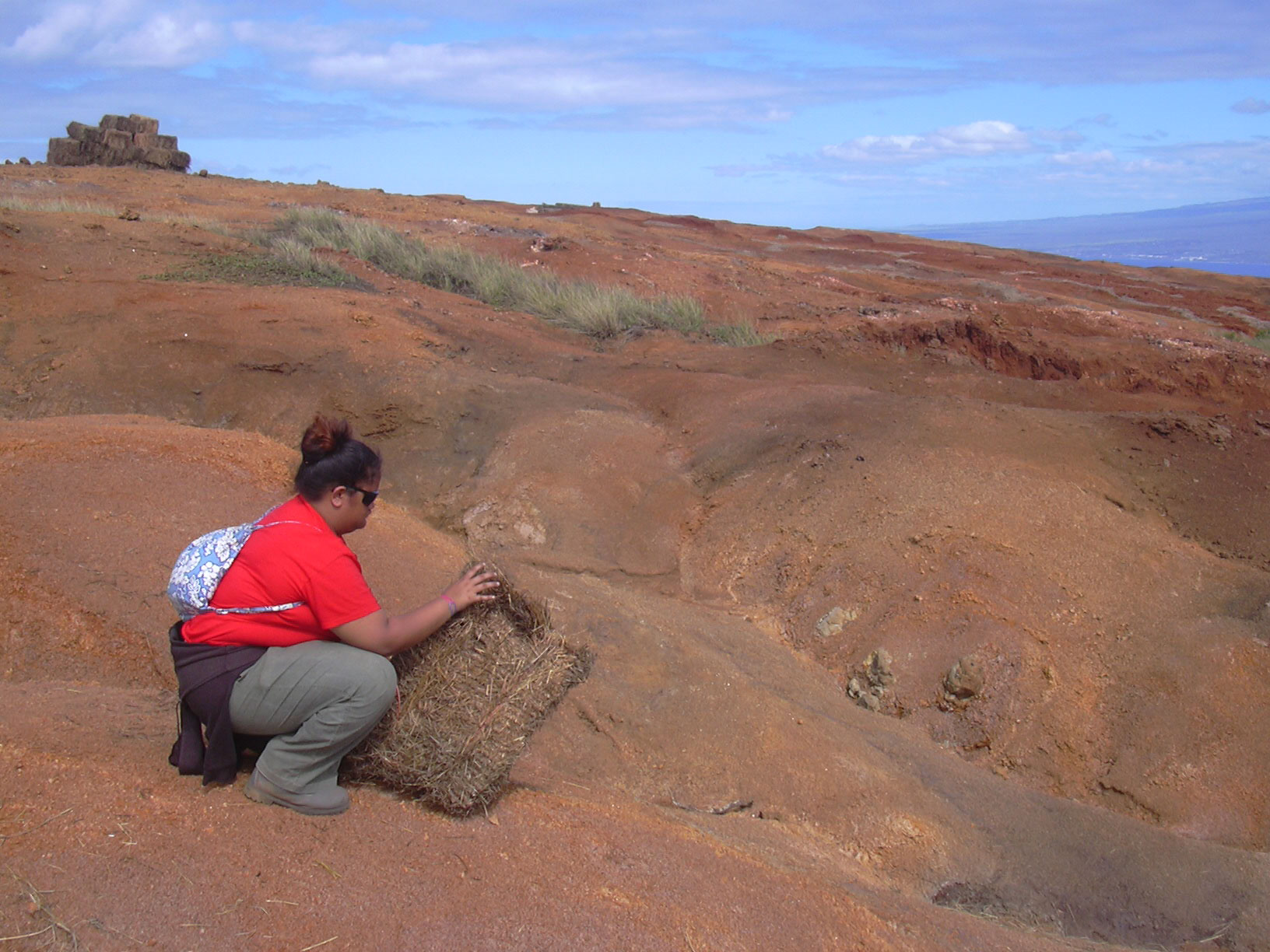
A volunteer spreading seed from a bale of tanglehead in an area with little vegetation, Puu Moaulanui, Kahoolawe, Hawaiian Islands. Photo by Forest & Kim Starr (Starr Environmental, Creative Commons Attribution 4.0 International license).
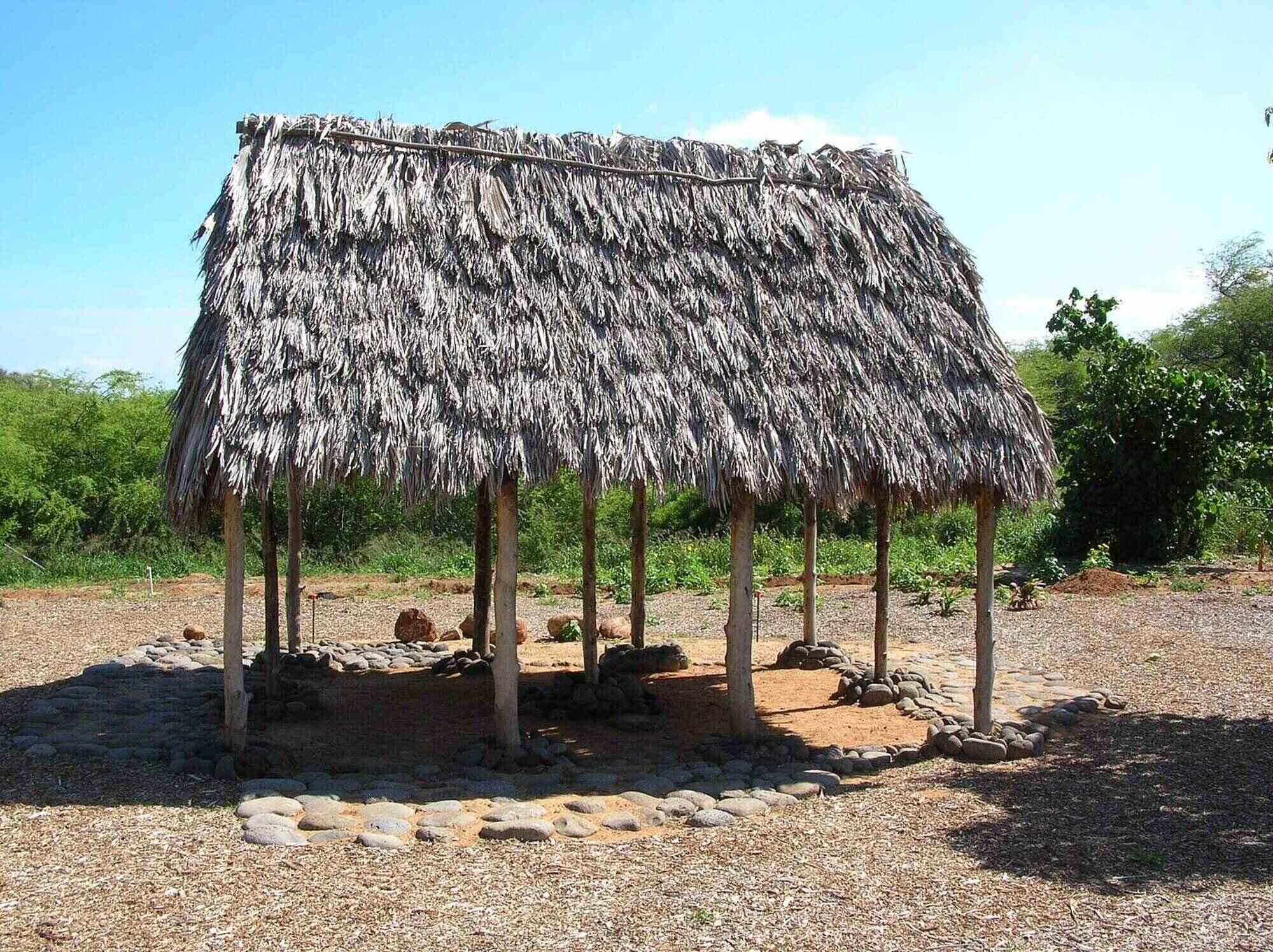
Tanglehead used as thatching on a shelter in Maui Nui Botanical Garden, Maui, Hawaiian Islands. Photo by Forest & Kim Starr (Wikimedia Commons, Creative Commons Attribution 3.0 Unported license. Photo resized and cropped.)
Resources
Websites
Heteropogon contortus (L.) Roem. & Schult (Cynthia Mikateko Baloyi and Aluoneswi Caroline Mashau, SANBI/South Africa National Biodiversity Institute): https://pza.sanbi.org/heteropogon-contortus
Articles & reports
Tanglehead, Heteropogon contortus (L.) Beauv. ex Roemer & J.A. Schultes. USDA NRCS Plant Fact Sheet. PDF: https://soilcropandmore.info/crops/Grasses/Tanglehead/fs_heco10.pdf
Scientific articles
Bielfelt, B. J., and A. R. Litt. 2016. Effects of increased Heteropogon contortus (tanglehead) on rangelands: the tangled issue of native invasive species. Rangeland Ecology & Management 69: 508-512. https://doi.org/10.1016/j.rama.2016.06.006
Tjelmeland, A. D. 2011. Tanglehead ecology and management on the South Texas rangelands. Caesar Kleberg Wildlife Research Institute. PDF: https://www.ckwri.tamuk.edu/sites/default/files/pdf-attachment/2016-05/tanglehead_research_report_may2011.pdf
Wester, D., F. C. Bryant, A. D. Tjelmeland, J. L. Grace, S. L. Mitchell, J. T. Edwards, F. Hernández, R. K. Lyons, M. K. Clayton, S. Rideout-Hanzak, R. V. Machen, and J. A. Ortega-S. 2018. Tanglehead in southern Texas: A native grass with an invasive behavior. Rangelands 40: 37-44. https://www.sciencedirect.com/science/article/pii/S0190052818300191
Wied, J. P., H. L. Perotto-Baldivieso, A. A. T. Conkey, L. A. Brennan, and J. M. Mata. 2020. Invasive grasses in South Texas rangelands: historical perspectives and future directions. Invasive Plant Science and Management 13: 41-58. https://doi.org/10.1017/inp.2020.11



